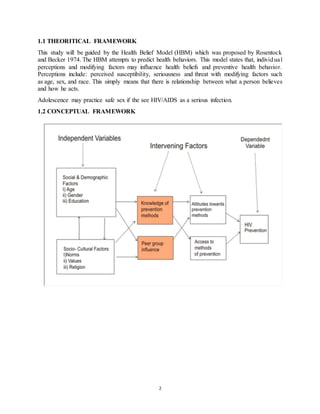This document provides an introduction and literature review on HIV/AIDS knowledge and awareness among adolescents. It discusses how HIV attacks the immune system, leading to AIDS. Rates of HIV are increasing among youth due to risk behaviors like unprotected sex and needle sharing. Adolescents often lack sexual education and engagement in risky acts. The study aims to assess HIV/AIDS knowledge, attitudes, and behaviors among high school students in Baguio City, Philippines to inform policy. A survey will be administered to students to understand their awareness and identify information gaps. The Health Belief Model will guide the research. The literature review covers topics like adolescent development, sexual and reproductive health challenges faced by youth, and parent-child relationships.










